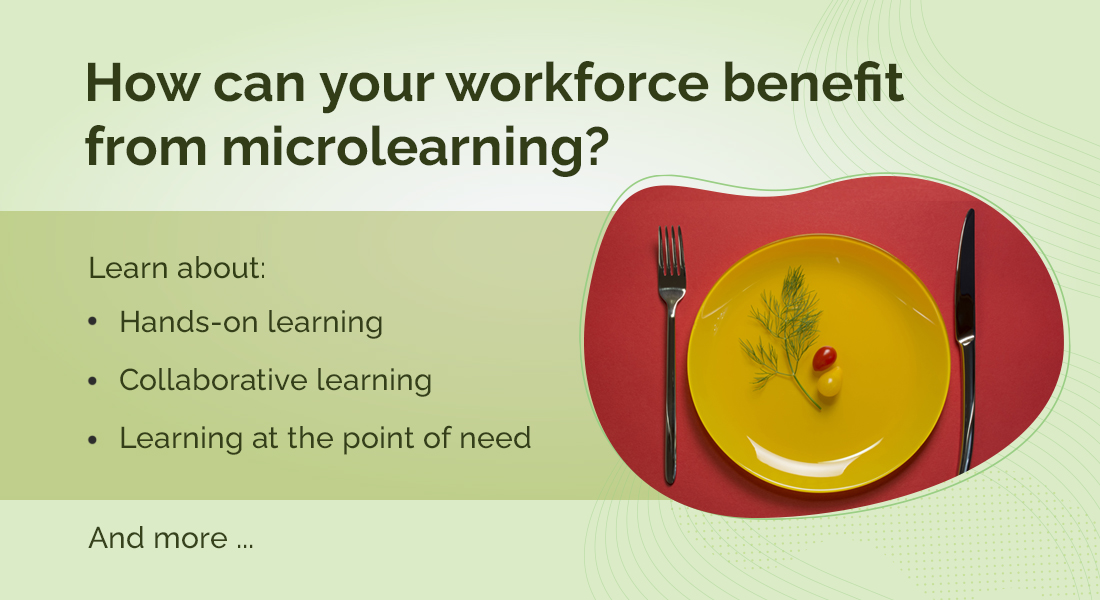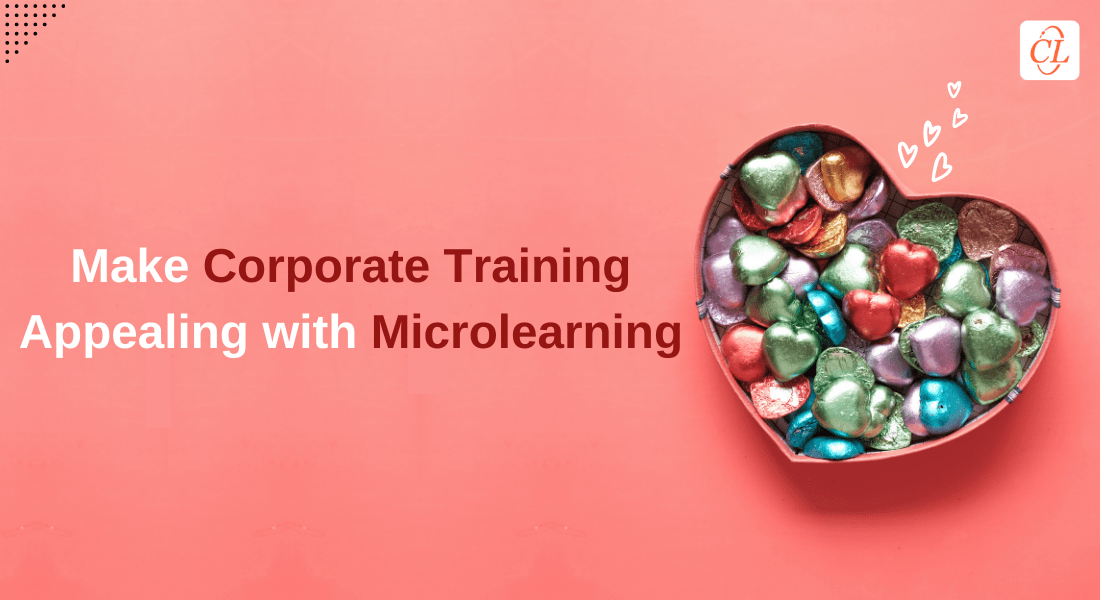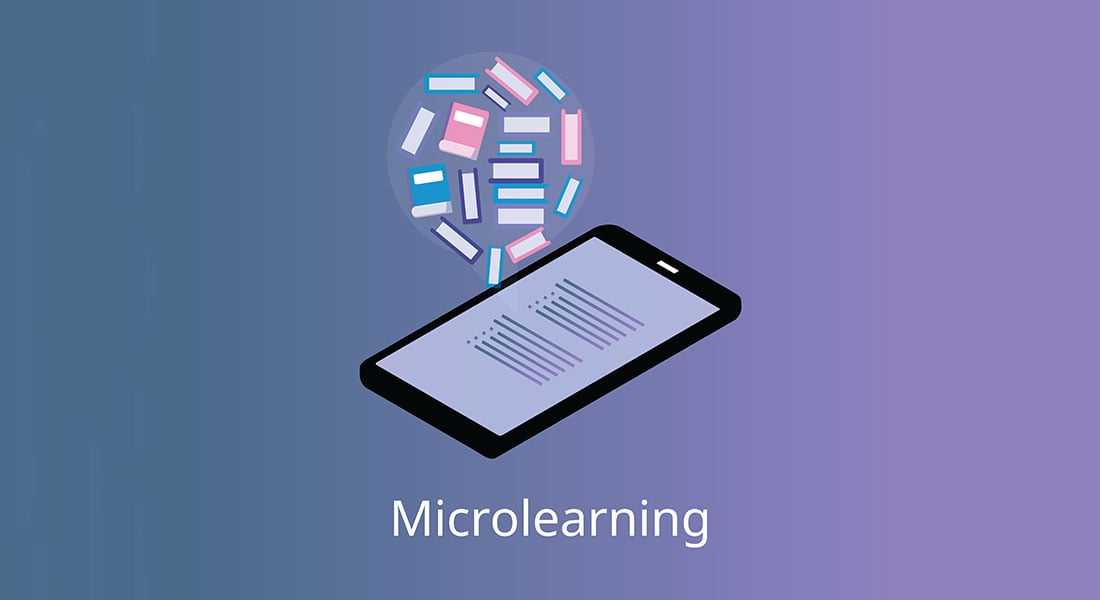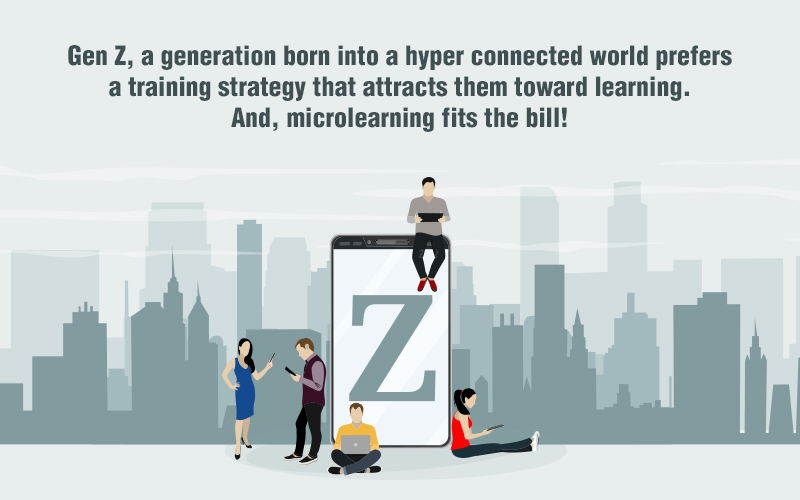Top 5 Benefits of Microlearning for Learners in Your Organization

A surge in millennial/Gen Y and Z workforce has forced organizations to acknowledge the need for developing learner-centric employee training. These new generation learners have the ability to adapt to the latest technological trends and are good multitaskers, but have short attention spans, making traditional long-form training methods unsuitable for their learning needs.
5 Benefits of Microlearning for Learners
- Delivers non-disruptive learning within the flow of work
- Provides relevant learning at the point of need
- Facilitates mobile learning experiences
- Creates a socially collaborative learning ecosystems
- Supports hands-on learning experiences
Microlearning is a perfect fit for these learners as each module addresses a single-learning objective, reducing cognitive load and facilitating easy understanding and engagement. Learners can access digital asset libraries anytime, anywhere, on any device, as part of ‘just-in-time’ (JIT) learning, which is one among many reasons for the popularity of microlearning in this growing on-demand and ‘pull-learning’ culture.
Read on to find out how you can incorporate the benefits of microlearning in your training initiatives to bring the best out of your workforce.
Learn how to build efficient microlearning modules. Access our free webinar here!
Top 5 Benefits of Microlearning for a Learning Workforce
1. Delivers Brief and Specific Knowledge in the Flow of Work
The goal of any corporate training is to enhance employee performance, not to create disruptions in work. But traditional methods of learning need employees to take time out of their work schedules to accommodate training. One of the major advantages of microlearning is its ability to facilitate non-disruptive learning within employees’ regular work schedules.
Microlearning delivers targeted and concise learning by addressing a single learning objective per module, keeping learning brief and to-the-point. The short learning modules, each around 10 minutes, do not require employees to rework their schedules to attend the sessions. This allows them to work on their assigned tasks as usual, while simultaneously assimilating the learning into their work.
A learning workforce can greatly contribute to business growth and given the ever evolving business models and strategies, organizations need to keep their workforce updated on the latest skills and knowledge, and what better way to do that than microlearning?
2. Provides Learning of Immediate Value and Relevance
By providing training in the form of microlearning modules, learners can be given the freedom to choose learning on topics of immediate use to them, to address their needs and perform better at tasks. This brings flexibility into learning which adds to overall training effectiveness.
Traditional long-form training is bulky and might include content that learners are already familiar with, which consumes a lot of time and effort unnecessarily.
3. Facilitates Anytime, Anywhere Learning
A report from Statista projects that there will be over 3.8 billion smartphone users worldwide in 2021. This, along with the millions who use other devices like laptops and tablets, constitute a vastly digitally equipped ecosystem.
A lot of organizations faced massive training disruptions in 2020 which led them to opt for alternative training approaches. This movement towards online training set the foundation for anytime, anywhere learning with the availability of numerous digital devices.
Microlearning combined with mobile learning delivers training in short modules which can be accessed anywhere, on any device, making it universally compatible. The flexible and learner-friendly nature of microlearning modules enables learners to learn at their point of need or convenience while having the freedom to schedule their learning. This way, learners can handle tasks efficiently without the need to compromise on other duties.
4. Supports Social and Collaborative Learning
A survey conducted by Brandon Hall Group on various organizations showed a staggering 85% to be experimenting with social and collaborative learning in their organizations. Combining microlearning with social learning doubles the impact of learning by helping learners learn from others and with others, by creating a collaborative learning environment.
These social learning communities bring the benefits of the micro-mobile learning duo beyond the confines of desktops and mobile devices into a collaborative environment. The micro-social learning combination facilitates continual learning as learners can ask queries, learn useful tips, best practices, and more on social learning platforms.
Microlearning assets like videos, podcasts, game-based nuggets, quizzes, interactive eBooks, and PDFs can be leveraged on these social learning platforms to foster interaction among learners. By maintaining a learning community, the micro-social learning duo facilitates collaborative learning effectively.
5. Supports Experiential Learning
According to Dr. Rumeet Billan, President and Chief Learning Architect of ViewPoint Leadership Inc., Gen Z’ers are both visual and kinesthetic learners. They prefer immediate access to practical and relevant content, which is individualised, engaging, and technologically advanced, for hands-on learning experiences.
Microlearning can be used to design experiential learning modules via scenario-based learning, simulations, and more … to create learning in the flow of work for Gen Z’ers, as they are good multi-taskers. Organizations not opting for experiential learning for their workforce will find it challenging to train Gen Z, who will soon flood the corporate workforce.
How can we get more out of microlearning?
By combining it with rapid eLearning development!
Unlike conventional eLearning, rapid eLearning helps rollout courses faster, leveraging the power of authoring tools.
So, when microlearning is combined with rapid eLearning, it provides the dual benefits of cutting down on development time, while retaining the most relevant ‘need-to-know’ content in the training, so learners don’t have to waste time going through ‘nice-to-know’ information. Evolving business needs and changing learner profiles make the micro-rapid eLearning duo the perfect match for the modern learner’s learning needs.
To Sum it All Up!
Businesses looking to create an impact in their respective domains can leverage the benefits of microlearning to impart non-disruptive learning that can be assimilated into the employees’ regular work schedules. Microlearning has the ability to provide learning of immediate value and relevance, support socially collaborative and experiential learning, anytime and anywhere.





